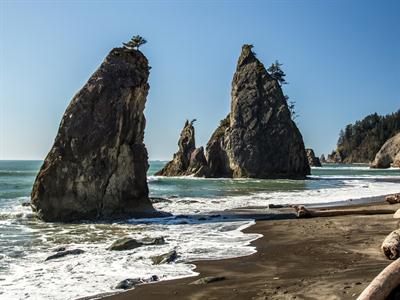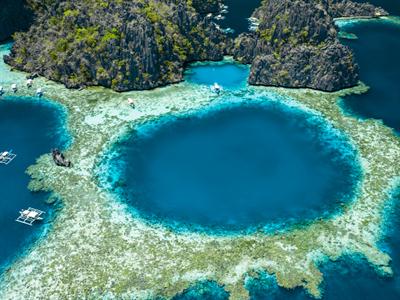PDF chapter test TRY NOW
Like other agents, erosional and depositional activities of sea waves give rise to various coastal landforms. Let's learn about few such important landforms.

Coastal Landforms
Sea cliffs are steep faces of rock and soil that are formed by the erosional activity of waves. These cliffs range from only a few metres high to hundreds of metres above sea level.

Sea cliff
Sea cave or littoral cave is a cave formed in a cliff by wave action. These are formed due to repeated striking action of sea waves on rocks which creates cracks over time, widening the crack to form a cave-like structure.

Sea cave
Sea Arches: Repeated erosion of caves enlarges it to an extent where only the roof is left behind, forming Sea Arches.

Sea arch
Stacks: Sea Arches on erosion loses their roof, leaving behind only the walls. These wall-like structures are called stacks.

Stacks
Beach: A beach is formed when waves deposit sand and gravel along the shoreline.
Sand bar: A long mass or low ridge of submerged or partially exposed sand built up in the water along a shore or beach by the action of waves or currents. It is also called a shoal or sandbank. It is a deposition of sand or mud found in the sea, almost parallel to the coast.

Sand bar
Important!
The first longest beach in the world is the Miami beach in South Florida in the U.S.A. The second longest beach in the world is Marina beach in Chennai.

Miami beach, Florida
Lagoon: A shallow body of water separated from a larger body of water (usually the ocean) by sandbars, barrier islands, or coral reefs. Lagoons are often called estuaries, sounds, bays, or even lakes.

Lagoon
Example:
Chilka lake - Odisha, Pulicat lake - Tamil Nadu and Andhra Pradesh and Vembanad lake - Kerala are the famous lagoons in India.
